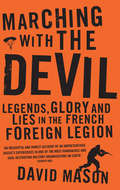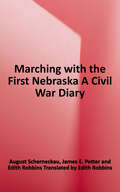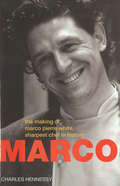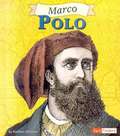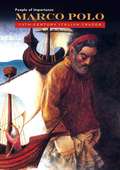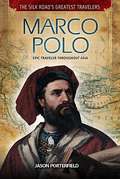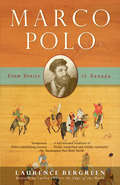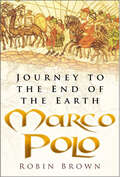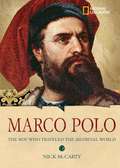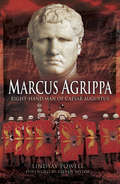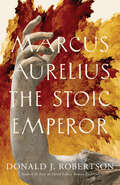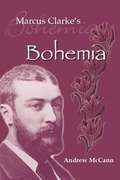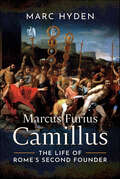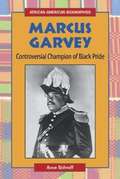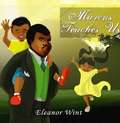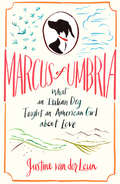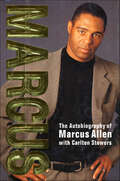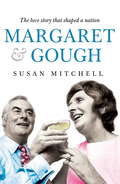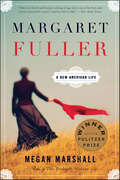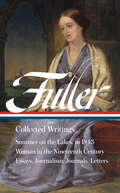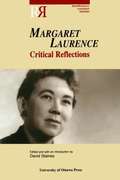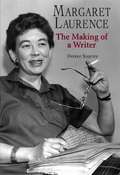- Table View
- List View
Marching with the Devil: Legends, Glory and Lies in the French Foreign Legion
by David Mason`Since its creation in 1831, the French Foreign Legion has become the stuff of myth, fiction and dreams... Anyone thinking of joining up would be well advised to read this book first? - The Sun HeraldA real-life boy's own adventure, Marching With The Devil is an account of David Mason's five years in the infamous French Foreign Legion.David Mason graduated from the Australian National University with a law degree and an honours degree. Like those around him, he could easily have settled for a life of share portfolios, good suits, new cars and big houses. But David wanted more ? he wanted a challenge, an adventure, something beyond the ordinary that would test him physically and mentally. He looked around to see what he could do. Working in an open-cut mine . . . done that. Running a marathon . . . hmm, not hard enough. Climbing Everest . . . maybe? Joining the French Foreign Legion . . . perfect!Marching With The Devil is the gripping true story of what happened when an Australian lawyer left his comfortable existence and joined the legendary French Foreign Legion. He stayed for five years and served time in the elite Parachute Regiments. With the motto 'March or Die', the legion has a history of pain, grief and glory. David Mason takes us behind the myth to reveal exactly what happens: the adventure, the danger, the drinking, the fighting and the lies that sustain the legend.fore the final choice must be made.`Remarkable... It's hard not to think it a shame that a man of such obvious gifts should have wasted them on the legion, just so as not to have to feel like a quitter, even if this book was the result? - The Age`Marching with the Devil quickly turns into an insightful and honest account of an unpretentious Aussie's experiences in one of the most ramshackle and soul-destroying military organisations on Earth? - Courier Mail`A strangely compulsive read about one man?s quest for self knowledge? - Men's Health Magazine`Mason left a comfortable life in Australia to test himself in the crucible of the legion, and he writes about it 20 years after his service time necessary to give himself the distance and context he needed to write about an extraordinary and painful experience? - Sunday Mail Brisbane
Marching with the First Nebraska: A Civil War Diary
by August ScherneckauAugust Scherneckau’s diary is the most important firsthand account of the Civil War by a Nebraska soldier that has yet come to light. A German immigrant, Scherneckau served with the First Nebraska Volunteers from 1862 through 1865. Depicting the unit’s service in Missouri, Arkansas, and Nebraska Territory, he offers detail, insight, and literary quality matched by few other accounts of the Civil War in the West. His observations provide new perspective on campaigns, military strategy, leadership, politics, ethnicity, emancipation, and a host of other topics. Scherneckau takes readers on the march as he and his comrades plod through mud and snow during a grueling winter campaign in the Missouri Ozarks. He served as a provost guard in St. Louis, where he helped save a former slave from kidnappers and observed the construction of Union gunboats. He describes the process of transforming a regiment from infantry to cavalry, and his account of First Nebraska’s pursuit of Freeman’s Partisans in Arkansas is an exciting portrayal of mountain fighting. An annotated edition that brings to bear the editors’ and translator’s respective expertise in both the Civil War and the German language, Scherneckau’s account is an important addition to primary material on the war’s forgotten theater. It will be a valued resource for historian and Civil War enthusiast alike.
Marcia Clark: Her Private Trials and Public Triumphs
by Clifford L. LinedeckerWife. Mother. Celebrity. Crusader. Who is the real Marcia Clark? How did a sheltered, studious young woman born into a religious Jewish family become a hard-hitting prosecutor and National media star? Read about: Her early childhood in san Francisco-- and dreams of the stage. Her stormy first marriage to a high-stakes gambler whose rip-off victims included O.J. Simpson ... Her Meteoric rise from defense attorney to Special Trials Prosecutor whose high-profile cases included the Rebecca Schaeffer stalker murder trial. Her past battles with Robert Shapiro. The man who was her secret mentor. Her disastrous second marriage-- and the custody battle for their two young sons that has sparked outrage across America. Why she underwent a complete makeover for the O.J. Simpson case.
Marco Pierre White: Making of Marco Pierre White,Sharpest Chef in History
by Charles HennessyMarco was born of working-class parents on a bleak council estate in Leeds, and his Italian mother died when he was six years old. Today he has become a star chef of international renown, a controversial media celebrity, a national icon of the 1980s and 1990s, and a multimillionaire entrepreneur - all before the age of 40. How has this staggering rise to fame and fortune been achieved? MPW (as he calls himself and many of his new restaurants) is today widely regarded as the best cook in the country, but his astonishing talents and understanding of food are only part of the explanation. As this fascinating book reveals, there are many sides to this complex man which the massive media coverage he has received over the years have never revealed. Charles Hennessy tells the story with insight: the unpromising early life, his first job as a kitchen porter in Harrogate, the epiphany at the age of 17 when he went to work at the Box Tree restaurant in Ilkley, his arrival in London, learning under the Roux brothers, Pierre Koffmann and Raymond Blanc, and the opening of his own first restaurant, Harvey's from whence his fame and fortune grew.
Marco Polo (Fact Finders Biographies)
by Kathleen McFarrenProvides an introduction to the life of the thirteenth-century Venetian explorer Marco Polo who traveled along the Silk Road to the court of Kublai Khan in China.
Marco Polo: 13th-Century Italian Trader
by John RiddleTrader Marco Polo was one of the first Europeans to travel to China, staying away from his homeland in Italy for 24 years before returning. After he came back to Italy, Marco wrote of his travels and adventures in East Asia in his book Il Milione, sharing his tales with other Europeans. Polo changed the way Europeans saw the world by opening their eyes to the wonderful culture and people of China. Learn the story of one of the world's most famous explorers and traders in Marco Polo: 13th-Century Italian Trader.
Marco Polo: Epic Traveler Throughout Asia (The Silk Road's Greatest Travelers)
by Jason PorterfieldUpon returning to his native Venice from a nearly 25-year journey through Asia, Marco Polo fueled the Western imagination with his tales about the splendors of the East. This lively biography follows Marco’s intrepid family as they navigate the spice stalls, caravansaries, and dangers that once populated the Silk Road and enter Kublai Khan’s Mongol court in China, where they served as advisors. Readers will learn about the Polos’ importance as cultural emissaries at a time of limited global exchange and how Marco’s account of their travels—whether fact or fiction—heralded the later golden age of exploration.
Marco Polo: From Venice to Xanadu
by Laurence BergreenBetween 1271 and 1275, Marco Polo, gentleman and merchant of Venice, accompanied his father Niccolo and uncle Maffeo on a journey east from Acre, Israel, into central Asia along the Silk Route, eventually reaching China and the court of the Great Khan of the Mongol Empire, Kublai Khan. Entering the service of the Khan, he travelled extensively in the Mongol Empire. The three Venetians returned home by sea in 1292-5, calling at Sumatra and southern India before reaching Persia and making the last part of their journey to Venice overland.
Marco Polo: Journey to the End of the Earth
by Robin BrownThe incredible story of Marco Polo's journey to the ends of the earth has for the last seven hundred years been beset by doubts as to its authenticity. Did this intrepid Venetian really trek across Asia minor as a teenager, explore the length and breadth of China as the ambassador of the ruthless dictator, Kublai Khan, and make his escape from almost certain death at the hands of Kublai Khan's successors? Robin Brown's book aims to get to the truth of Marco Polo's claims. Covering his early life, his extraordinary twenty-four-year Asian epic and his reception in Italy on his return, 'Marco Polo' places the intrepid Venetian in context, historically and geographically. What emerges confirms the truth of Polo's account. Polo, scholars now agree, opened vistas to the medieval mind and stirred the interest in exploration that prompted the age of the European ocean voyages. All who now enjoy the fruits of Marco Polo's incredible journey through Asia - whether in the form of spectacles, fireworks, pasta or any of the many products of the Silk Road - will find in Robin Brown's book a fascinating portrait of a man who made history happen by bringing about the meeting of East and West.
Marco Polo: The Boy Who Traveled the Medieval World (National Geographic World History Biographies)
by Nick McCarty<p>In a life of ceaseless exploration, Marco Polo pushed out the borders of his narrow medieval world. <p>Born in Venice in 1254, the young Marco Polo first met his father at age 15, when the elder Polo returned from a trading expedition to the East. The father's tales of the court of the Kublai Khan in China ignited a lifelong passion for adventure in the son. <p>The Polos set out for China in 1271, traveling through the Middle East, across the Gobi Desert, to Khanbaliq in China. The journey took four years. Kublai Khan took a great liking to Marco Polo, employing him as a spy throughout his vast empire. Marco traveled and observed the cultures of Sumatra, Sri Lanka, and India in this capacity. His notes later became one of the world's great travel books, The Description of the World.</p>
Marcus Agrippa: Right-Hand Man of Caesar Augustus
by Lindsay PowellThe authoritative biography of the ancient Roman general and loyal deputy to Emperor Augustus by the acclaimed historian and author of Augustus at War. When Gaius Octavius became the first emperor of Rome, Marcus Agrippa was by his side. As the emperor&’s loyal deputy, he waged wars, pacified provinces, beautified Rome, and played a crucial role in establishing the Pax Romana—but he always served knowing that he would never rule in his own name. Why he did so, and never grasped power for himself, has perplexed historians for centuries. In this authoritative biography, historian Lindsay Powell offers a penetrating new assessment of Agrippa&’s life and achievements. Following Caesar&’s assassination, Agrippa was instrumental in asserting the rights of his friend Gaius Octavius as the dictator&’s heir, seeing him crowned Emperor Augustus. Agrippa then established a reputation as a bold admiral, defeating Marcus Antonius and Queen Cleopatra at the Battle of Actium, and ending bloody rebellions in the Cimmerian Bosporus, Gaul, Hispania, and Illyricum. Agrippa was also an influential statesman and architect. He established the vital road network that turned Julius Caesar&’s conquests into viable provinces, overhauled Rome&’s drains and aqueducts, and built the original Pantheon. Marrying Augustus&’s daughter, Julia the Elder, Agrippa became co-ruler of the Roman Empire until his death in 12 BC. His bloodline lived on in the imperial family, through Agrippina the Elder, his grandson Caligula, and great-grandson Nero.
Marcus Aurelius: The Stoic Emperor (Ancient Lives)
by Donald J. RobertsonExperience the world of Roman emperor Marcus Aurelius and the tremendous challenges he faced and overcame with the help of Stoic philosophy This novel biography brings Marcus Aurelius (121–180 CE) to life for a new generation of readers by exploring the emperor&’s fascinating psychological journey. Donald J. Robertson examines Marcus&’s relationships with key figures in his life, such as his mother, Domitia Lucilla, and the emperor Hadrian, as well as his Stoic tutors. He draws extensively on Marcus&’s own Meditations and correspondence, and he examines the emperor&’s actions as detailed in the Augustan History and other ancient texts. Marcus Aurelius struggled to reconcile his philosophy and moral values with the political pressures he faced as emperor at the height of Roman power. Robertson examines Marcus&’s attitude toward slavery and the moral dilemma posed by capturing enemies in warfare; his attitude toward women; the role of Stoicism in shaping his response to the threat of civil war; the treatment of Christians under his rule; and the naming of his notorious son Commodus as his successor. Throughout, the Meditations is used to shed light on the mind of the emperor—his character, values, and motives—as Robertson skillfully weaves together Marcus&’s inner journey as a philosopher with the outer events of his life as a Roman emperor.
Marcus Clarke's Bohemia: Literature And Modernity In Colonial Melbourne
by Andrew McCannMarcus Clarke's Bohemia is the first major critical study of Marcus Clarke; arguably Australia's best known and most important nineteenth-century writer. It situates Clarke both within the bohemian culture of Melbourne and a burgeoning cosmopolitan print-culture extending beyond national borders. Marcus Clarke's Bohemia offers detailed readings of Clarke's major works, many of which have not previously been discussed, and traces the influence of other European writers on Clarke's writing. Importantly, it focuses on his engagement with the modernity of the place and time in which he worked and lived. McCann's in-depth study unearths the richness of Clarke's writing and brings nineteenth-century Melbourne to life. Impeccably researched and gracefully written, Marcus Clarke's Bohemia is challenging and compelling reading.
Marcus Furius Camillus: The Life of Rome's Second Founder
by Marc HydenThis is the only modern biography of Marcus Furius Camillus currently available in English. Camillus served as a censor, was elected to six consular tribuneships, appointed dictator five times, and enjoyed four triumphs. He toppled mighty Veii, ejected the Senones from Rome following its sacking, and helped orchestrate a grand compromise between the patricians and plebeians. The Romans even considered him Rome’s second founder – a proud appellation for any Roman – and revered him for being an exemplar of Roman virtue. Interestingly, he never held the consulship. Plutarch stated that Camillus had avoided it on purpose, and for good reason. The office was often at the heart of controversy, given that patricians dominated it for most of Camillus’ life. The appointment of a dictator was an emergency measure taken only in the direst of situations and the fact that Camillus was repeatedly appointed speaks of a period when the young Republic was surrounded by enemies and still fighting for survival. Without Camillus’ efforts the city may never have fulfilled its great destiny. Marc Hyden sifts the fragmentary and contradictory sources and, while acknowledging that much legend and exaggeration quickly accrued around Camillus’ name, presents the story of this remarkable life as the ancient Romans knew it.
Marcus Garvey: Controversial Champion of Black Pride
by Anne SchraffChronicles the life of Marcus Garvey, a fiery black leader who began a crusade for African Americans to fight against oppression in the early years of the twentieth century.
Marcus Teaches Us
by Eleanor Wint<p>Marcus Teaches Us is the first and only book of its kind. It portrays the teachings of The Hon. Marcus Mosiah Garvey in language and pictures that all kids will love. It is bright with innovative colouring activities, uses simple language and gives children the opportunity to practice cursive writing. Marcus Garvey is a monumental, internationally acclaimed Black philosopher who has influenced the independence movement of every black nation in the world. Children worldwide should each have their own copy as they deserve to have the knowledge captured in this attractive book on Marcus Garvey.</p> <P><P><i>Advisory: Bookshare has learned that this book offers only partial accessibility. We have kept it in the collection because it is useful for some of our members. To explore further access options with us, please contact us through the Book Quality link. Benetech is actively working on projects to improve accessibility issues such as these.</i>
Marcus of Umbria: What an Italian Dog Taught an American Girl about Love
by Justine van der LeunReaders will delight in this tale of an urbanite who leaves her magazine job to move to Collelungo, Italy, population: 200. There, in the ancient city center of a historic Umbrian village, she sets up house with the enticing local gardener she met on vacation only weeks earlier. This impulsive decision launches an eye-opening series of misadventures when village life and romance turn out to be radically different from what she had imagined.Love lost with the gardener is found instead with Marcus, an abandoned English pointer that she rescues. With Marcus by her side, Justine discovers the bliss and hardship of living in the countryside: herding sheep, tending to wild horses, picking olives with her adopted Italian family, and trying her best to learn the regional dialect. The result is a rich, comic, and unconventional portrait about learning to live and love in the most unexpected ways.
Marcus: The Autobiography of Marcus Allen
by Carlton Stowers Marcus AllenIn his eloquent words, hear mega-football superstar Marcus Allen--Heisman trophy winner, Super Bowl MVP, and record-breaking running back--tell his inspiring and unforgettable story.In Marcus, learn about his triumphant rise to athletic stardom, to his rocky 11-year relationship with Los Angeles Raiders coach Al Davis, to his controversial friendship with O.J. Simpson, and all the high and low points in between.Marcus on Al Davis:"I could neither understand nor determine why Al Davis had declared war against me. But for all the motives suggested, none involved the possibility that the issue might be racial. Al Davis was many things that I didn't admire, but he was no bigot." Marcus on O.J. Simpson:"I am and forever will be forever be tortured by the loss of two people who were my friends; one murdered, one now forced to live a lifetime being blamed for tragedy." Marcus on Football"It teaches hard lessons about success and failure, joy and disappointment. And when played well, it has a poetry all its own."
Marga Richter
by Sharon MirchandaniThis is the first full-length introduction to the life and works of significant American composer Marga Richter (born 1926), who has written more than one hundred works for orchestra, chamber ensemble, dance, opera, voice, chorus, piano, organ, and harpsichord. Still actively composing in her eighties, Richter is particularly known for her large-scale works performed by ensembles such as the London Philharmonic Orchestra and the Civic Orchestra of Chicago and for other pieces performed by prominent artists including pianist Menahem Pressler, conductor Izler Solomon, and violinist Daniel Heifetz. Interspersing consideration of Richter's musical works with discussion of her life, her musical style, and the origins and performances of her works, Sharon Mirchandani documents a successful composer's professional and private life throughout the twentieth century. Covering Richter's formative years, her influences, and the phases of her career from the 1950s to the present, Mirchandani closely examines Richter's many interesting, attractive musical works that draw inspiration from distinctly American, Irish/English, and Asian sources. Drawing extensively on interviews with the composer, Mirchandani also provides detailed descriptions of Richter's scores and uses reviews and other secondary sources to provide contexts for her work, including their relationship to modern dance, to other musical styles, and to 1970s feminism.
Margaret & Gough: The love story that shaped a nation
by Susan MitchellThe Whitlams' wasn't just a love story - it was a dynamic and enduring partnership that shaped our nation.This is the compelling story of former Prime Minister Gough Whitlam, his wife Margaret and their 70-year relationship ? personal and political, private and public. It is a story of how two extraordinary people, side by side, led the Australian nation into an exciting and turbulent new era.Gough had no small talk, Margaret had the gift of easy conversation. He was often ill-at-ease in company and preferred his books. She was warm, inclusive and jollied him along. He had a vicious tongue and a quick temper. She always tried to see the best in people. He knew everything about the ideology, history and heroes of the Labor movement. She trusted her instincts. They saw each other as equals and never hesitated to express their different viewpoints. He may have passed the laws that changed the nation, but she made it possible.This is a story of love, respect, struggle, success, failure, disappointment and resilience. It was the strength and endurance of this remarkable relationship that helped change our nation politically, culturally and socially. Neither Gough nor Margaret would have developed into what each became without the influence of the other. Through every major political change, every election campaign, every triumph and every loss, they stood together.MARGARET AND GOUGH takes us inside a partnership where the political was always personal and the personal was always political.
Margaret Bourke-White: Young Photographer (Childhood of Famous Americans Series)
by Montrew DunhamA fictionalized biography of the photographer and writer who was one of the original staff photographers for Life magazine and the first accredited woman war correspondent to be sent overseas during World War II.
Margaret Fuller: A New American Life
by Megan MarshallWinner of the Pulitzer Prize for BiographyFrom an early age, Margaret Fuller provoked and dazzled New England’s intellectual elite. Her famous Conversations changed women’s sense of how they could think and live; her editorship of the Transcendentalist literary journal the Dial shaped American Romanticism. Now, Megan Marshall, whose acclaimed The Peabody Sisters “discovered” three fascinating women, has done it again: no biography of Fuller has made her ideas so alive or her life so moving. Marshall tells the story of how Fuller, tired of Boston, accepted Horace Greeley’s offer to be the New-York Tribune’s front-page columnist. The move unleashed a crusading concern for the urban poor and the plight of prostitutes, and a late-in-life hunger for passionate experience. In Italy as a foreign correspondent, Fuller took a secret lover, a young officer in the Roman Guard; she wrote dispatches on the brutal 1849 Siege of Rome; and she gave birth to a son. Yet, when all three died in a shipwreck off Fire Island shortly after Fuller’s fortieth birthday, the sense and passion of her life’s work were eclipsed by tragedy and scandal. Marshall’s inspired account brings an American heroine back to indelible life.
Margaret Fuller: Collected Writings (LOA #388)
by Margaret Fuller&“Humanity can be divided into three classes: men, women, and Margaret Fuller.&”—Edgar Allan PoeA true American original—radical transcendentalist, intrepid journalist, and pioneering feminist—joins Library of America with the most authoritative single-volume collection of her writings ever, including many rare and previously unpublished works, newly transcribed from original notebooks and journalsTranscendentalist, journalist, feminist, activist, public intellectual, war correspondent, poet: Margaret Fuller&’s achievement in her short life was as diverse, wide-ranging, and radical as her multi-generic writings. Now, at long last, this pioneering writer joins Library of America with the most comprehensive and most authoritative version of her writings ever published.Here are her two best-known books: Summer on the Lakes, in 1843, an account of her travels to the Great Lakes, a plea for better treatment of the American Indian peoples, and a sketchbook of Fuller&’s thought; and Woman in the Nineteenth Century, the foundational document of American feminism and the first major work on women&’s rights since Wollstonecraft&’s A Vindication of the Rights of Woman fifty-three years earlier.Joining them are a generous selection of Fuller&’s published essays and journalism, including &“American Literature&” and her reviews and columns for the New York Tribune, as well as her war correspondence from besieged Rome in 1849; unpublished writings and selections from Fuller&’s journals, many previously unknown and newly transcribed for this volume; and a selection of Fuller&’s letters, including three newly translated from the original Italian.Rounding out the volume are a chronology by Fuller&’s biographer Megan Marshall, along with helpful notes identifying Fuller&’s many allusions and quotations, and an index.
Margaret Laurence: Critical Reflections
by David StainesThis book highlights the accomplishments of one of Canada's most acclaimed and beloved fiction writers, Margaret Laurence. The essays in this collection explore her body of work as well as her influence on young Canadian writers today.
Margaret Laurence: The Making of a Writer
by Donez XiquesMargaret Laurence: The Making of a Writer is an engaging narrative that contains new and important findings about Laurence’s life and career. This biography reveals the challenges, successes, and failures of the long apprenticeship that preceded the publication of the The Stone Angel, Laurence’s first commercially successful novel. Donez Xiques demonstrates the importance of Margaret Laurence’s early work as a journalist in her development as a writer and covers her return to Canada from Africa in the late 1950s. She details the significance of Laurence’s "Vancouver years" as well as the challenges of her year in London prior to settling at Elm Cottage in Buckinghamshire, when Laurence stood on the verge of success. The Margaret Laurence known to most people is a public figure of the 1960s and 1970s; matriarchal, matronly, and accomplished. The story of her early years in the harsh setting of the Canadian Prairies during the 1930s - years of drought and the Great Depression - and of her African years has never before been chronicled with the thoroughness and vividness that Xiques provides for the reader. Appended to this powerful new biography is a short story by Margaret Laurence that has never before been published and two other stories that have not been widely available. They indicate the range of her concerns and show a marked departure from her fiction in The Tomorrow-Tamer and Other Stories and A Bird in the House. Readers will benefit from the extensive research in this full and vibrant portrait of one of the most revered writers of twentieth-century Canadian literature.
